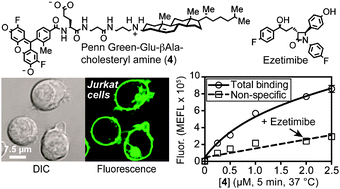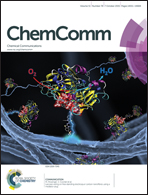Fluorescent mimics of cholesterol that rapidly bind surfaces of living mammalian cells†
Abstract
Mammalian cells acquire cholesterol, a critical membrane constituent, through multiple mechanisms. We synthesized mimics of cholesterol, fluorescent N-alkyl-3β-cholesterylamine-glutamic acids, that are rapidly incorporated into cellular plasma membranes compared with analogous cholesteryl amides, ethers, esters, carbamates, and a sitosterol analogue. This process was inhibited by ezetimibe, indicating a receptor-mediated uptake pathway.


 Please wait while we load your content...
Please wait while we load your content...